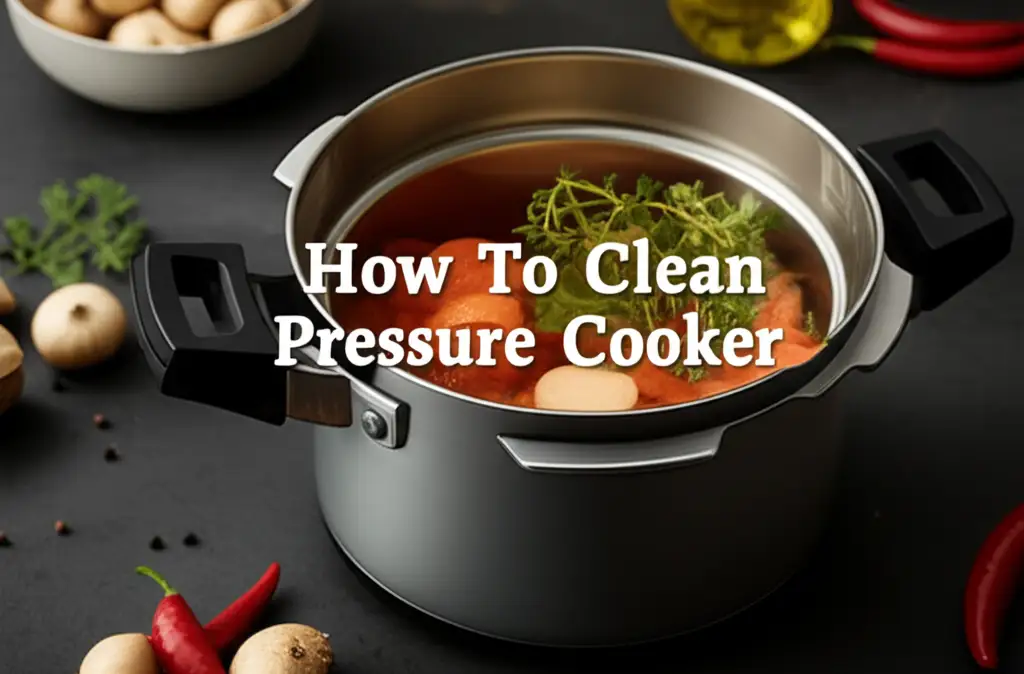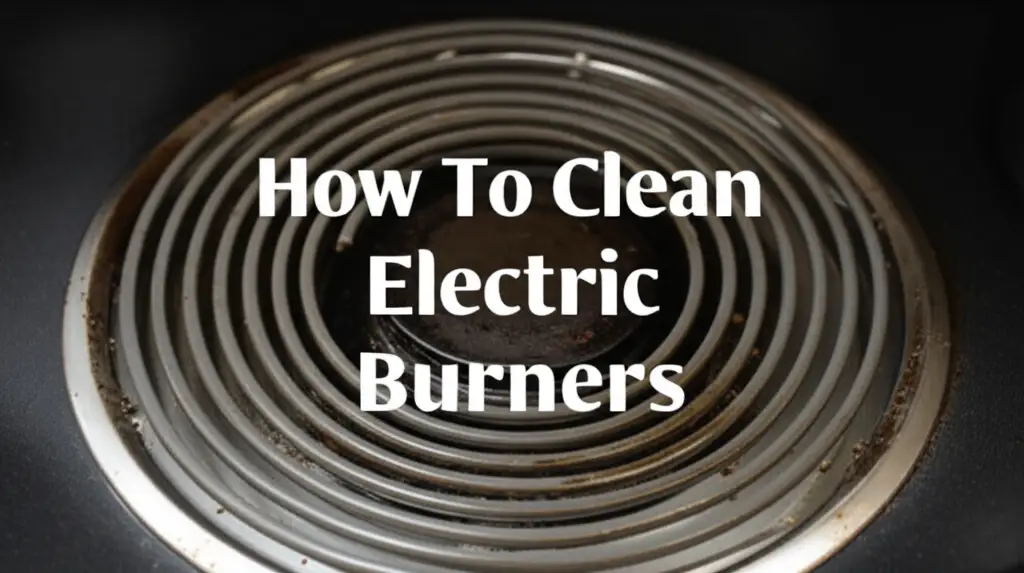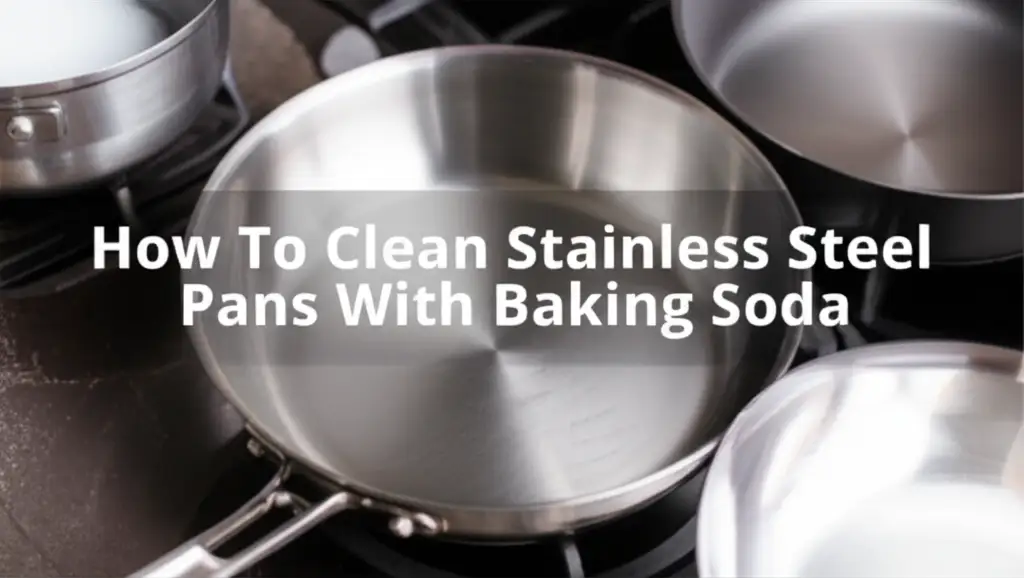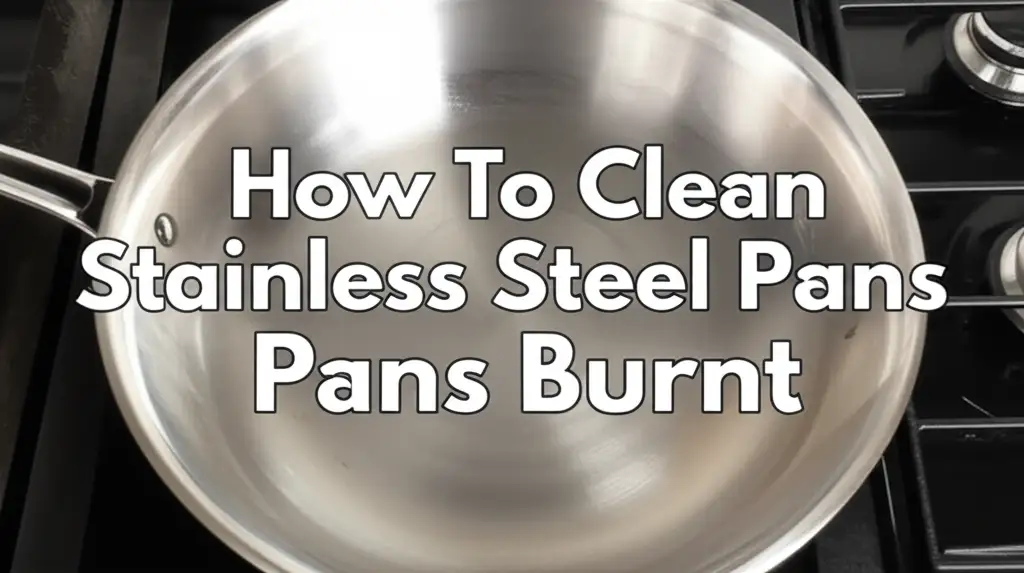· Kitchen Cleaning · 16 min read
How To Clean Pressure Cooker

Master the Art: How To Clean Pressure Cooker Parts Effectively
Cooking with a pressure cooker is fantastic. It saves time and makes delicious meals. However, food can stick, and odors can build up. Knowing how to clean pressure cooker properly is key to keeping it working well. A clean pressure cooker is also a safe pressure cooker.
This guide helps you keep your appliance spotless. We will cover why cleaning matters. We will also detail the tools you need. You will learn step-by-step how to clean all parts, including the main pot, lid, gasket, and valves. I will also share tips for stubborn messes and explain common cleaning mistakes to avoid.
Takeaway
- Regularly clean your pressure cooker after each use.
- Disassemble all removable parts for a thorough wash.
- Use mild soap, warm water, and non-abrasive tools.
- Pay close attention to the gasket and safety valves.
- Address stubborn stains and odors with natural cleaners like vinegar or baking soda.
Cleaning a pressure cooker involves disassembling its parts, washing them with mild soap and warm water, and thoroughly drying each piece. Pay special attention to the lid, gasket, and valves, as these are critical for safe and efficient operation. Regular cleaning prevents food buildup and maintains performance.
Why Cleaning Your Pressure Cooker Matters
A pressure cooker is a valuable tool in any kitchen. It cooks food faster and often makes it more tender. But like any cooking appliance, it gets dirty. Food particles can stick inside the pot. Odors can also linger, affecting the taste of future meals.
Cleaning your pressure cooker is important for several reasons. First, it ensures food safety. Leftover food can breed bacteria. A clean pot means safe food for your family. Second, it keeps your pressure cooker working well. Blocked valves or a dirty gasket can stop the cooker from sealing properly. This affects its efficiency and cooking results.
Third, proper cleaning extends the life of your appliance. Food acids and residues can damage the metal over time. Regular cleaning prevents corrosion and wear. It protects your investment. A well-maintained pressure cooker serves you for many years.
Tools You Need for Pressure Cooker Cleaning
Before you start cleaning your pressure cooker, gather all the necessary supplies. Having everything ready makes the process smoother. You probably have most of these items in your kitchen already. No special or expensive tools are required for this task.
Here are the basic cleaning supplies you will need:
- Dish Soap: A standard liquid dish soap works well. Choose a mild one to avoid harsh chemicals.
- Warm Water: This helps to loosen food particles and grease effectively.
- Soft Cloths or Sponges: These are gentle on surfaces. They prevent scratches, especially on non-stick or polished finishes.
- Small Brush or Toothbrush: Essential for cleaning small crevices. These include valve openings and gasket grooves.
- Vinegar: White vinegar is a natural deodorizer and descaler. It tackles hard water stains and lingering smells. You can also use vinegar for how to clean shower with vinegar.
- Baking Soda: Great for absorbing odors and providing a gentle abrasive for scrubbing.
- Lemon Halves (Optional): These can add a fresh scent and help with mild stains.
Avoid using harsh abrasives like steel wool. These can scratch the surface of your pressure cooker. Scratches can trap food and make future cleaning harder. Always choose soft, non-damaging tools.
Step-by-Step Guide to Cleaning the Main Pot
The main pot is the largest part of your pressure cooker. It holds the food you cook. This part often gets the most food residue. Cleaning it correctly helps keep your meals tasting great. It also prevents stains from building up.
Start by letting the pot cool down completely. Never clean a hot pressure cooker. Once cool, remove any large food pieces. You can scrape them into the trash. Then, fill the pot with warm, soapy water. Let it soak for about 15-20 minutes. This helps loosen stubborn food.
Cleaning Stainless Steel Pressure Cooker Pots
Stainless steel is durable and common for pressure cookers. It is also quite easy to clean.
- Empty and Rinse: Pour out the soaking water. Rinse the pot thoroughly to remove loose debris.
- Wash with Soap: Apply a few drops of mild dish soap to a soft sponge. Scrub the inside and outside of the pot. Pay attention to any stuck-on food bits. For extra stubborn stains on the bottom, a paste of baking soda and water can work wonders, similar to how you might clean the bottom of a pan.
- Rinse Thoroughly: Rinse the pot under running warm water. Make sure all soap residue is gone. Soap left behind can cause discoloration or affect future cooking.
- Dry Completely: Use a clean, dry cloth to dry the pot immediately. Air drying can leave water spots. This is especially true in areas with hard water. Ensure it is completely dry before storing.
Cleaning Aluminum Pressure Cooker Pots
Aluminum pressure cookers require a bit more care. Aluminum can discolor easily. It can also react with certain foods.
- Gentle Soaking: Soak the pot in warm, soapy water. Do not use extremely hot water.
- Mild Cleaning: Use a soft cloth or sponge with mild dish soap. Scrub gently. Avoid harsh scrubbing pads. These can scratch and damage the aluminum surface.
- Avoid Acidic Cleaners: Do not use acidic cleaners like vinegar directly on aluminum. It can cause dark stains. If you need to remove hard water stains, use a very dilute solution and rinse immediately.
- Rinse and Dry Promptly: Rinse the pot thoroughly with warm water. Dry it immediately and completely with a soft cloth. Do not let aluminum air dry, as it can lead to oxidation and discoloration.
No matter the material, always ensure the main pot is dry. Store it in a clean, dry place. This prevents mold or mildew growth. It also keeps your pressure cooker ready for its next use.
Cleaning the Lid, Gasket, and Valves
The lid, gasket, and valves are the most important parts for safety and function. They control the pressure inside the cooker. If these parts are dirty or blocked, your pressure cooker may not work correctly. It could even be unsafe. Always clean them after every use.
The Lid
The lid often collects food splatter. It also holds the pressure valve and safety valve mechanisms.
- Wash the Lid: Wash the lid with warm, soapy water. Use a soft sponge to clean all surfaces. Pay attention to the underside where food splashes can dry.
- Clean Around Valves: Use a small brush or an old toothbrush to clean around the pressure valve and safety valve stems. Food bits can easily get stuck here. Ensure these areas are clear.
- Rinse and Dry: Rinse the lid thoroughly. Dry it completely with a clean cloth. Make sure no water remains in crevices.
The Gasket (Sealing Ring)
The gasket, or sealing ring, creates the airtight seal for pressure buildup. It is usually made of rubber or silicone. Over time, it can absorb odors and become stiff.
- Remove the Gasket: Gently pull the gasket out of its groove on the lid. This is usually easy to do.
- Wash the Gasket: Wash the gasket with warm, soapy water. You can scrub it gently with your fingers or a soft cloth. Check for any food particles lodged in its grooves.
- Inspect for Damage: While cleaning, check the gasket for cracks, tears, or hardening. A damaged gasket will not create a proper seal. If you see damage, replace it. Gaskets typically last for a year or two of regular use.
- Dry and Reinstall: Dry the gasket completely before putting it back. Ensure it is fully dry to prevent mold growth. Reinstall it correctly in its groove on the lid.
The Pressure Regulator and Safety Valves
These small parts are crucial for regulating pressure and preventing accidents. They can become clogged with food.
- Remove Valves: Carefully remove the pressure regulator (weight) and any safety valves according to your cooker’s manual. Some models have removable parts for easy cleaning. Others are fixed.
- Clean Regulator: Wash the pressure regulator with warm, soapy water. Use a small brush to clean any openings or crevices. Ensure the vent pipe it sits on is also clear.
- Clean Safety Valves: If the safety valve is removable, clean it gently. Check for any blockages. For non-removable safety valves, use a thin, non-metallic probe (like a toothpick) to ensure the opening is clear. Never force anything into the valve.
- Rinse and Dry: Rinse all valve components. Dry them completely before reassembling. A blocked valve can cause serious safety issues. Always ensure they are clear and functional.
Thorough cleaning of these parts ensures your pressure cooker operates safely and efficiently every time.
Dealing with Stubborn Stains and Odors
Even with regular cleaning, your pressure cooker can sometimes develop stubborn stains or lingering odors. This is common, especially after cooking strong-smelling foods or starchy meals. Do not worry; there are simple and natural solutions to tackle these issues.
Removing Stains and Discoloration
Stains can appear inside the pot, especially if you cook acidic foods or leave food sitting for too long. White spots or rainbow-colored stains are common.
- Vinegar Solution: For discoloration or hard water stains, fill the pot with equal parts white vinegar and water. Let it sit for 15-30 minutes, or gently simmer it for 5-10 minutes if the stain is very persistent. Then, pour out the solution, scrub with a sponge, and rinse thoroughly. Vinegar is also excellent for general cleaning, such as cleaning glass with vinegar.
- Baking Soda Paste: For more stubborn, stuck-on food or light burn marks, make a paste with baking soda and a little water. Apply the paste to the stained area. Let it sit for 10-15 minutes. Then, scrub with a non-abrasive sponge. The baking soda provides a gentle abrasive action. This method is also effective for general kitchen cleanup, like cleaning the bottom of your oven.
- Lemon Power: Cut a lemon in half. Rub the cut side directly onto stains. The natural acidity of lemon helps to lift discoloration. Rinse thoroughly afterward. You can also boil lemon slices in water inside the pot for strong stains and a fresh scent.
Eliminating Lingering Odors
Pressure cookers can sometimes retain the smell of strong foods like curries, chili, or fish. This can transfer to your next meal.
- Vinegar Soak: Fill the pot with a solution of half water and half white vinegar. Let it sit overnight. The vinegar will absorb and neutralize most odors. Rinse it well the next morning.
- Baking Soda Absorber: Sprinkle a generous amount of baking soda into the empty, dry pot. Put the lid on (but do not seal it) and let it sit for a day or two. The baking soda will absorb lingering smells. Rinse before use.
- Coffee Grounds: For very strong odors, place a handful of dry coffee grounds in the empty pot. Close the lid loosely and let it sit for a few hours or overnight. Coffee grounds are excellent at absorbing bad smells. Dispose of the grounds and wash the pot thoroughly afterward.
- Sunlight Exposure: If possible, place the cleaned and completely dry pressure cooker (pot and lid separately) in direct sunlight for a few hours. Sunlight has natural deodorizing properties. This can help air out stubborn smells.
Always ensure the pressure cooker is completely dry before storing it. Moisture can contribute to musty smells. With these methods, your pressure cooker will stay fresh and ready for any meal.
Deep Cleaning and Maintenance Tips
Beyond regular cleaning, your pressure cooker benefits from occasional deep cleaning. This ensures all parts are working optimally and prolongs its lifespan. Think of it as a thorough check-up for your appliance.
Descaling Hard Water Deposits
If you live in an area with hard water, mineral deposits can build up inside your pressure cooker. These look like white, chalky residue. This buildup can affect heat transfer and efficiency.
- Vinegar Method: Pour two cups of white vinegar into the pot. Add one cup of water. Bring this solution to a boil inside the pressure cooker (without pressure, just on the stovetop). Let it simmer for 10-15 minutes. The vinegar breaks down mineral deposits.
- Scrub and Rinse: Turn off the heat and let it cool. Scrub the inside of the pot with a soft brush or sponge. You will see the deposits coming off easily. Rinse the pot thoroughly with clean water. Dry it immediately.
Do this deep descaling every few months, or whenever you notice significant mineral buildup.
Inspecting and Replacing Parts
Regular inspection is a key part of maintenance.
- Gasket: Check the sealing ring frequently. Look for cracks, hardening, or signs of wear. A healthy gasket feels pliable. If it is stiff or damaged, replace it. Most manufacturers recommend replacing the gasket every 12-18 months, depending on usage.
- Valves: Ensure the pressure regulator and safety valve pins move freely. If they seem sticky or clogged, clean them carefully with a small brush. Never use force. If a valve is damaged or does not move, replace it immediately. These are vital safety features.
- Handles: Check handles and knobs for looseness. Tighten any screws if needed. Loose handles can be a safety hazard when moving a hot, heavy pressure cooker.
Proper Storage for Longevity
How you store your pressure cooker also affects its condition.
- Completely Dry: Always ensure all parts are completely dry before storage. Storing a damp pressure cooker can lead to odors, mold, or rust.
- Loose Lid: Store the lid upside down on the pot, or slightly ajar. This allows air circulation. It prevents the gasket from flattening and sticking to the pot. It also helps prevent trapped moisture and smells.
- Separate Gasket (Optional): For very long-term storage, some people remove the gasket and store it flat. This helps maintain its shape and elasticity. Reinstall it before next use.
- Cool, Dry Place: Store your pressure cooker in a cool, dry cabinet or pantry. Avoid storing it in humid areas like under the sink.
Following these deep cleaning and maintenance tips ensures your pressure cooker remains safe and efficient. This also extends its life.
Common Mistakes to Avoid When Cleaning
Cleaning your pressure cooker properly helps it last longer. However, some common mistakes can damage your appliance or make it less safe. Knowing what to avoid is as important as knowing what to do.
- Using Abrasive Cleaners or Scouring Pads: Never use steel wool, abrasive powders, or harsh scouring pads on your pressure cooker. These can scratch the surface of stainless steel or aluminum. Scratches not only look bad but can also trap food particles, making future cleaning harder. They can also damage non-stick coatings if your cooker has one. Always opt for soft cloths, sponges, or nylon brushes.
- Dishwashing All Parts: While the main pot of some stainless steel pressure cookers might be dishwasher safe, many components are not.
- Lids: Pressure cooker lids often contain sensitive valve mechanisms and delicate parts. High heat and harsh detergents in dishwashers can damage these. They can corrode metal parts, warp plastic, or degrade seals. Always hand wash the lid.
- Gaskets/Sealing Rings: Dishwasher heat can cause rubber or silicone gaskets to become brittle, lose elasticity, or warp. This means they will not create a proper seal. Hand wash gaskets gently.
- Valves: Small valve components can get lost or damaged in the dishwasher. Hand wash them carefully to ensure they remain functional.
- Aluminum Pots: Aluminum can discolor and pit in the dishwasher due to the harsh detergents and high heat. Always hand wash aluminum pressure cookers. Always check your pressure cooker’s manual for specific dishwasher recommendations. If in doubt, hand wash.
- Ignoring the Gasket and Valves: These parts are critical for safe operation. If they are not cleaned regularly, food residue can build up. This can prevent the pressure cooker from sealing properly. It can also block safety vents, which is dangerous. Make it a habit to remove and clean the gasket and inspect the valves every time you use your cooker.
- Storing While Wet: Storing any kitchen appliance while it is still damp is a bad idea. For a pressure cooker, it can lead to water spots, mold growth, or unpleasant odors. It can also cause corrosion, especially on metal parts or screws. Always ensure all components are completely dry before reassembling and storing.
- Using Chemical Oven Cleaners: Never use strong chemical oven cleaners or drain cleaners on your pressure cooker. These are too harsh. They can permanently damage the metal and leave toxic residues that are unsafe for cooking. Stick to mild dish soap, vinegar, and baking soda.
Avoiding these common mistakes helps preserve your pressure cooker. It keeps it safe, clean, and ready for many more delicious meals.
FAQ Section
How often should I clean my pressure cooker?
You should clean your pressure cooker thoroughly after every use. This includes the main pot, lid, gasket, and valves. Regular cleaning prevents food buildup and odors. It also ensures safe and efficient operation for your next meal.
Can I put my pressure cooker in the dishwasher?
Generally, only the main stainless steel pot is dishwasher safe. Lids, gaskets, and valve components usually require hand washing. Dishwashers can damage delicate parts, warp gaskets, and corrode aluminum. Always check your specific pressure cooker’s manual for guidance.
Why does my pressure cooker smell even after cleaning?
Lingering odors often come from food particles trapped in the gasket or valves. Deep odors can also absorb into the gasket material over time. Try soaking the pot and gasket in a vinegar and water solution, or leaving baking soda inside to absorb smells. Also, ensure all parts are thoroughly dry before storage.
How do I remove burnt-on food from my pressure cooker?
For burnt-on food, fill the pot with water, add a few tablespoons of baking soda, and bring it to a simmer for 10-15 minutes. Let it cool. The burnt food should then scrape off easily with a wooden or plastic utensil. Avoid using metal scrapers or harsh abrasives.
How often should I replace the sealing gasket?
The sealing gasket, or rubber ring, typically needs replacement every 12 to 18 months, or more often with heavy use. It can become brittle, cracked, or lose elasticity over time. A worn gasket prevents a proper seal, making your pressure cooker inefficient and potentially unsafe.
What causes discoloration inside my pressure cooker?
Discoloration, such as white spots or a rainbow sheen, often results from mineral deposits in hard water or reactions with acidic foods. You can remove these by simmering a solution of white vinegar and water in the pot. Then scrub and rinse it thoroughly. This is a normal occurrence and does not harm the cooker’s function.
Conclusion
Cleaning your pressure cooker correctly is an essential step for every home cook. It goes beyond simple hygiene. It directly impacts your safety, the taste of your food, and the overall lifespan of this valuable kitchen tool. I hope this comprehensive guide gives you confidence. You can now keep your pressure cooker in top condition.
Remember to clean your pressure cooker after every single use. Pay close attention to all its parts, especially the lid, gasket, and various valves. These small components are crucial for maintaining the pressure seal and ensuring safe operation. By avoiding common cleaning mistakes and utilizing simple, natural cleaning agents like vinegar and baking soda, you can tackle even the most stubborn stains and lingering odors.
Regular maintenance and proper storage are also key. They prevent issues like hard water buildup and extend the life of your appliance. A well-cared-for pressure cooker is a safe, efficient, and reliable partner in your kitchen. So, take the time to clean pressure cooker components thoroughly. You will enjoy countless delicious meals for years to come.
- pressure cooker cleaning
- kitchen appliance care
- stainless steel cleaning
- aluminum cleaning
- pressure cooker maintenance




